
IgorsLAB is a German website mostly dedicating their efforts towards AMD Hardware. Igor who is running the site has setup RTG (Radeon tweaker Group) which in their words is a group of enthousiasts that are trying to improve AMD’s graphics cards by means of undervolting and overclocking, giving buyers of AMD products the tools they need to get more enjoyment out of more efficient and faster products’. We certainly call that a good thing! Most recently they released an overclocking tool for the new AMD Navi Radeon RX 5700 and RX 5700XT that removes existing power limits, or beter said raises the power limit to increase OC headroom. They are developing this registry modification further and further. If you visit IgorsLAB now you can download a small piece of software called MorePowerTool making it very easy to do. Be aware this is all on your own risk. We are not resonsible for broken cards neither is RTG or IgorsLAB.
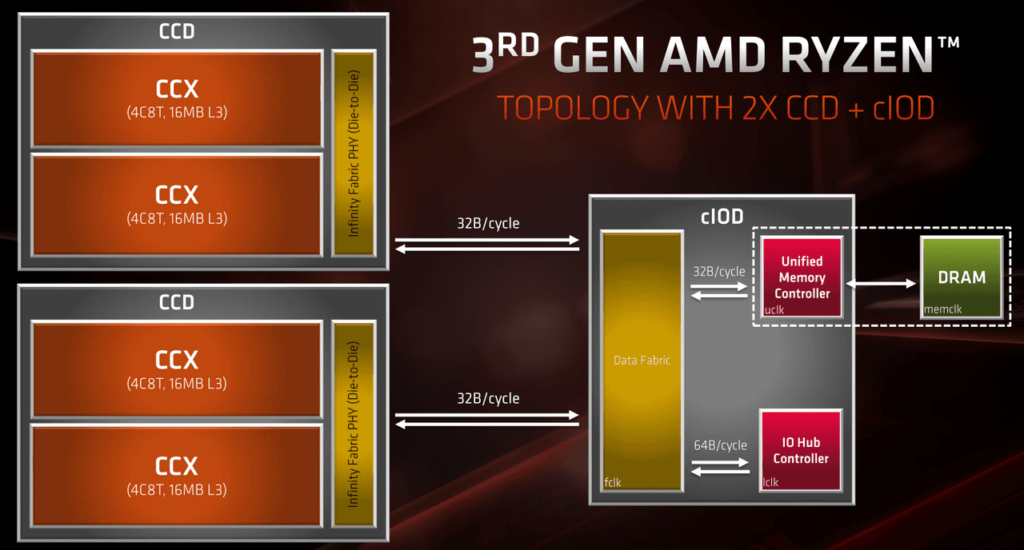
Yesterday Igorslab came up with an interesting cooling perspective on Ryzen 3000. As we all know AMD’s new Ryzen 3xxx chips are build on a new 7nm proces making it a physically hot cpu. These new AMD Zen 2 chips consist out of one or two CCD’s (Charge Coupled device(s)) and an I/O chip. Within the CCD you have two CCX’s containting the actual cpu cores. AMD has designed this (modular) chip in such a way that they can place one or two CCD and disable cores within CCX’s to make either a 4-6-8-12 and eventually 16 core cpu.
For a Ryzen 5 3600(X) (6-core cpu) this means there is one CCD with two CCX’s on which three cores per CCX are active (6-Core part). For the 3700X this means also 1 CCD, two CCX’s with four cores per CCX making it an 8-core part. The 3900X finally consists of two CCD, four CCX’s with three cores per CCX active making it an 12-core CPU. The CCD’s are connected through what AMD calls Infinity fabric connecting the chip to the onchip I/O (memory controller, IO Hub etc.) Due too the way the cpu is build, the cpu cores are on the outside of the physical cpu which makes that a hot spot as you can see in the image below made by Igor.
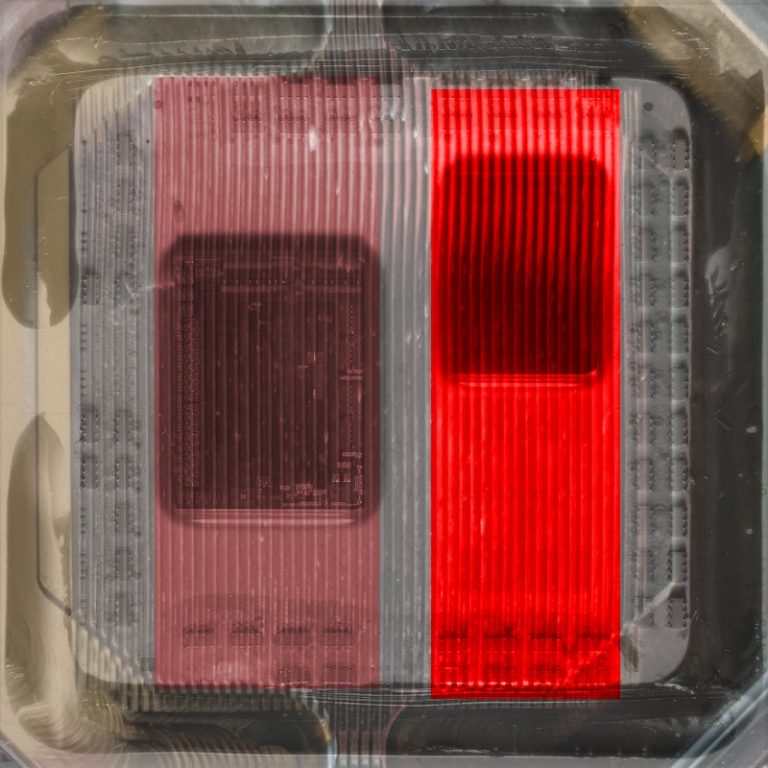
This is where the issue arises. If you cool a cpu, most cpu tower coolers, AIO’s and enthousiast waterblocks are designed to cool the middle of the chip as a priority and sometimes leave the sides exposed (see image below). The way the water flows through the cpu block is another factor, but also the position of the finn array within the waterblock is important for efficient cooling. Igor has conducted an experiment that shows it pays of to make a custom waterblock for your Ryzen 3000 or at least show the industry they can think of tailored cooling solutions for Ryzen 3000 regarding an alternative asymmetric design.
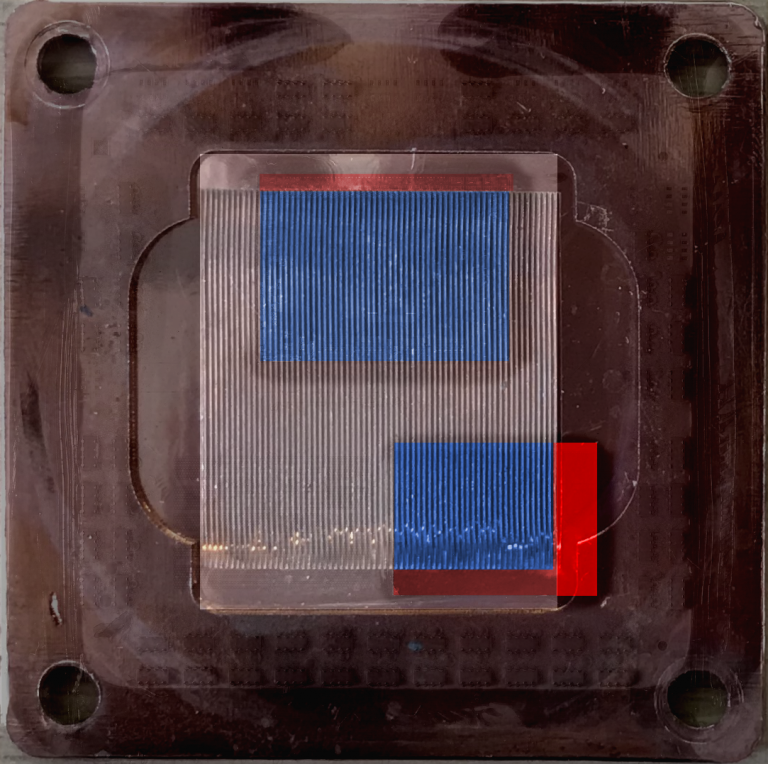
It has been proven Ryzen 3000 can hold and boost higher clocks when temperatures are lower. Even a couple of degrees can make a difference. Ryzen 3000 owners are best of watercooling and preferably opt for coolers also suited for Intel Socket 2066 as their finn stack and flow pattern covers a larger area of the waterblocks coldplate. Below you can find the original video if you understand the German Language and the finding of IgorsLAB. A little sidenote. Igor used a chiller which he modified to increase or decrease the waterflow. You can find the original review by following this link. Leave a comment for his hard work.

Alternative waterflow inlet outlet 
Variant 4 
Variant 3 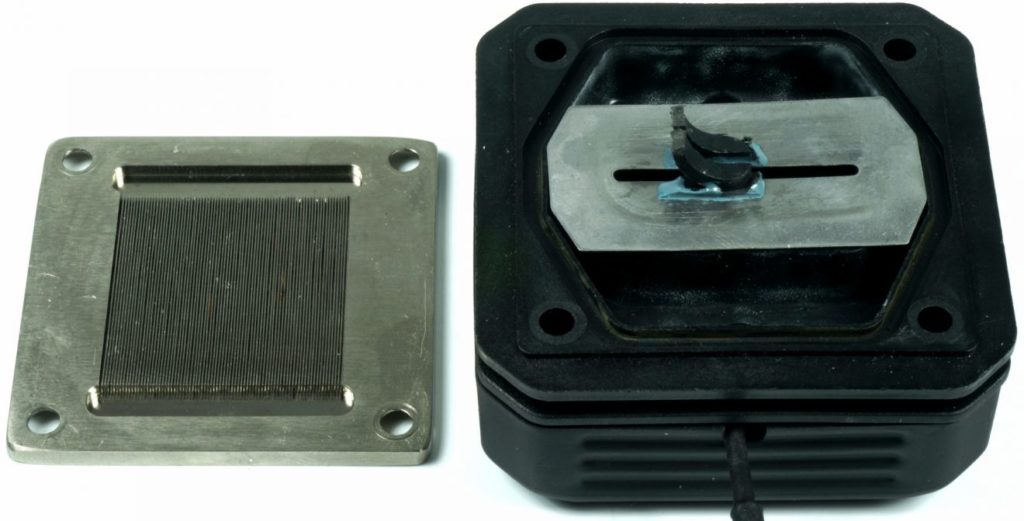
Variant 2 
variant 1
| Results cooling mods V1 to V4 | 40 l/h | 80 l/h | 120 l/h | 600 l/h |
| Original | 57 °C | 55 °C | 54 °C | 54 °C |
| Variante 1 | 57 °C | 55 °C | 54 °C | 54 °C |
| Variante 2 | 55 °C | 54 °C | 53 °C | 53 °C |
| Variante 3 | 56 °C | 54 °C | 54 °C | 54 °C |
| Variante 4 | 57 °C | 56° C | 55 °C | 54 °C |
| Original 90° Gedreht | 58 °C | 56 °C | 54 °C | 54 °C |
| Adapting the inlet | 40 l/h | 80 l/h | 120 l/h | 600 l/h |
| Original | 57 °C | 55 °C | 54 °C | 54 °C |
| Neuer Intake | 55 °C | 54 °C | 53 °C | 53 °C |
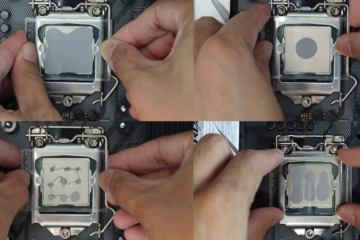


1 reactie
Noctua invalidates advantages of assymetric cooling solution for Ryzen 3000. | TECHJUNKIES · 31 oktober 2019 op 11:11
[…] while back we talked about the assymetric design of the Ryzen 3000 cpu’s. The cores of the Matisse cpu’s sit on the left side of the cpu, while the much cooler I/O […]